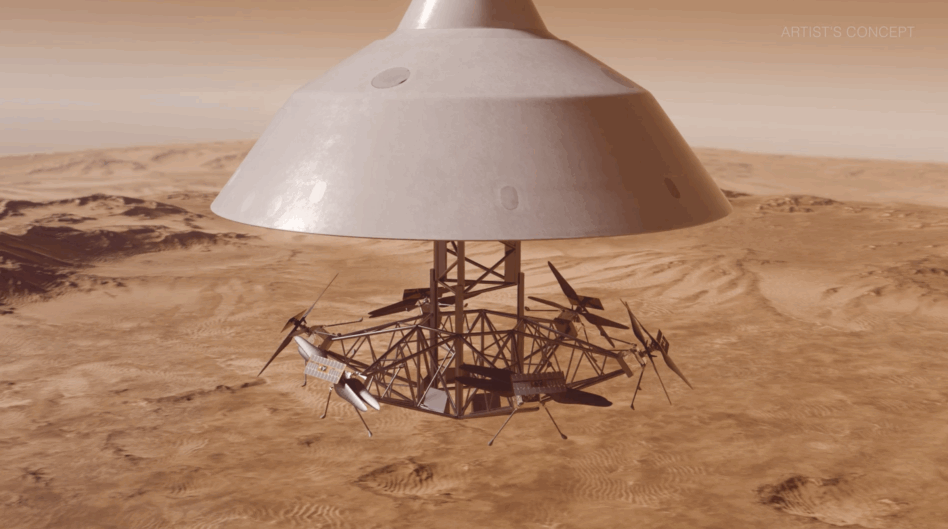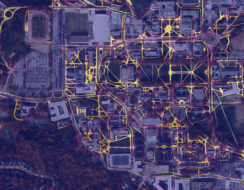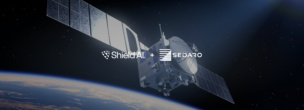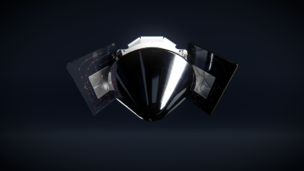Before the launch of NASA’s Mars Perseverance rover in 2020, AeroVironment, Inc. (AV) completed an 18-month mad dash to build a helicopter for the mission that could fly five times during a 30-day mission. When Ingenuity arrived at Mars, it stunned even its creators with its capabilities, eventually making 72 flights over three years to explore the Red Planet.
So what if NASA sent six larger, more capable copters next time?
AV and NASA JPL have developed a new mission concept called Skyfall that could deploy a fleet of sensor-equipped Mars helicopters directly from space, potentially as soon as 2028.
What now? After Ingenuity, AV turned to what came next. Initially, engineers focused on a version of the aircraft to support Mars Sample Return, with the helicopter designed to snag tubes of Martian rock and dust and then return these samples to an ascent vehicle.
When MSR was cancelled, however, the team wasn’t ready to give up. Their conversations with planetary scientists led them to conclude that helicopters made great regional explorers, covering more ground than rovers, but with more precision than an orbiter.
In collaboration with JPL, the company developed a remarkable concept: Fly six of its helicopters to Mars, and deploy them from a descent vehicle without any lander at all.
What it will take: AV is confident it can deliver vehicles that cost less than the $85M spent on Ingenuity; Will Pomerantz, the head of AV’s space business, says the Skyfall copters would cost less than the spacecraft required to launch them. That leaves three challenges:
- NASA needs to choose the mission in time to get development underway, ahead of the 2028 Mars transit window.
- AV and JPL need to work out the physics of deploying the helicopters from a space vehicle entering the Martian atmosphere, which is an area where AV has gained some expertise on Earth.
- JPL needs to complete a comms payload for the helicopters that can talk to overhead orbiters, since there will be no lander or rover to act as a relay.
Fit to size: The mission is intended to suit the political and practical realities of the Trump administration’s chaotic space policy environment. Skyfall “is fast, and it is dirt cheap, by Mars standards,” Pomerantz told Payload. The mission also directly supports future human missions that Trump’s NASA is pushing for.
“Skyfall is a human precursor mission—it will do killer science—but the raison d’être of Skyfall is, let’s make it easier and safer and faster for humans to get there,” Pomerantz told Payload,
AV envisions the copters gathering high-resolution data at potential landing sites, so the machines can “feed that information back to NASA, make it open to industry for the SpaceXs and Blue Origins and everyone else in the world, let them pick their landing sites, [and] let them ingest that data into their EDL software,” Pomerantz said.




